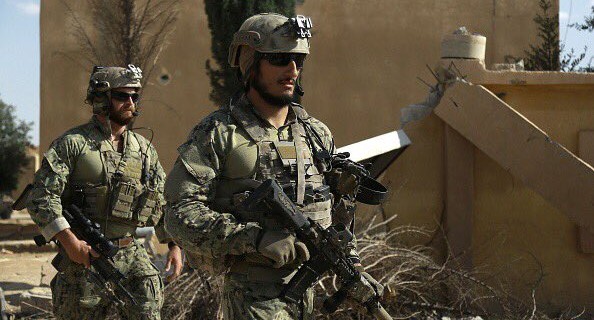“It is becoming more and more visible that US counter-terrorism approach is an utterly short-sighted strategy.”
Lars Hauch of MENA Roundup writes for EA about the latest escalation of US support for the Kurdish-led Syrian Democratic Forces in northern Syria:
The latest developments in northern Syria are not just another tragic chapter in the six-year conflict — they are a demonstration of Washington’s short-sighted strategy for the region.
In a real-life scenario that can be hardly surpassed for absurdity, Turkish-backed rebels fight against a US-backed Kurdish militia that cooperates both with the Assad regime and Russia. The Kurdish People’s Protection Units (YPG) militia has handed over territory west of the city of Manbij — captured in June 2016 with the support of the US — to regime troops. The lines are drawn for a clash between the de facto Kurdish-regime combination with a Turkey-rebel offensive that has moved through northern Aleppo Province since August 2016.
This escalating conflict was foreseeable. Recognizing Ankara’s blind eye with respect to Islamic State activities in the border area and the Erdoğan Government’s brutality towards Kurds, especially in southeast Turkey, the Turkish government has understandable security interests. As Turkish authorities have made absolutely clear for years, these include the prevention of a connected Kurdish autonomous area on its southern border. This applies even more when the area is dominated by the Syrian Democratic Union Party (PYD), an affiliate of the Kurdistan Workers’ Party (PKK) that Turkey has fought since the 1980s.
It was also foreseeable that the PYD would seize the moment and try to realize the Rojava (Syrian Kurdistan) project despite Turkey’s red line against the crossing of the Euphrates River to the west. But Washington still fails to answer the fundamental question of how it can manage support of a Kurdish movement that has close ties to a designated terror organization and is a declared enemy of a NATO ally.
A Fragile Buffer Zone
During the night of August 24, 2016, Turkey launched Operation Euphrates Shield. The Turkish Air Force targeted Islamic State positions around Jarablus, the last border town under the terrorist organization’s control. Tanks and special forces also advanced into the Aleppo countryside, supporting an offensive of roughly 5.000 rebels. Even then, the offensive targeted YPG units positioned south and east of the town.
But it is the seizure of al-Bab, 30 km (18 miles) south of the border and 40 km (25 miles) northeast of Aleppo city, that has raised the stakes. Turkey had to step up its investment to help rebels overcome ISIS resistance, finally triumphing on February 23. That in turn emboldened President Recep Tayyip Erdoğan to declare Kurdish-held Manbij the next target.
Manbij is a traffic hub on the route from the Kurdish cantons in northeast Syria, crossing regime territory, to the canton of Afrin in the northwest. The head of the Kurdish administration has said the city is a vital “artery”. So the YPG-dominated Military Council of Manbij — not trusting that the US would hold back the Turks and Syrian rebels — handed over territory west of the city to Assad’s troops. A Russian general said the regime would soon take over administrative control in Manbij and surrounding areas.
But this raises further challenges. The regime’s possible takeover is likely to cause annoyance in the Arab ranks of the YPG-led Syrian Democratic Forces. And the rebels in Euphrates — most of whom are affiliated to the Free Syrian Army but also some from the powerful Islamist movement Ahrar al-Sham — will see confirmation of their long-held suspicion of a tacit cooperation between the PYD/YPG and Assad.
The US Mis-Calculation
Once again, Washington has chosen and empowered a proxy to respond to a political urgency: in this case the rising of the Islamic State. The Kurdish militia YPG and the rest of the Syrian Democratic Forces have successfully pushed back the militants and is now standing at the gates of the IS’s self-declared capital Raqqa. However, the price is an intricate situation with the government in Ankara who will not bury the hatchet any time soon.
By supporting the YPG, Washington has not empowered Kurdish national army but the armed wing of a specific movement, thus reshaping the local balance of power significantly. At the same time, the YPG’s impressive territorial gains do not address the Islamic State’s conditions of existence. As long as there is no proper balance between Syria’s Sunni Arabs and the rising Shia Crescent and as long as the war rages on, there will be an Islamic State or its successor under whatever name — not to mention the continued presence of Al Qa’eda in the country.
Washington has tried hard to perceive northern Syria as an arena of counter-terrorism isolated from the rest of the war. It is becoming more and more visible that this was an utterly short-sighted strategy.
US special forces with the Kurdish-led Syrian Democratic Forces, May 2016

